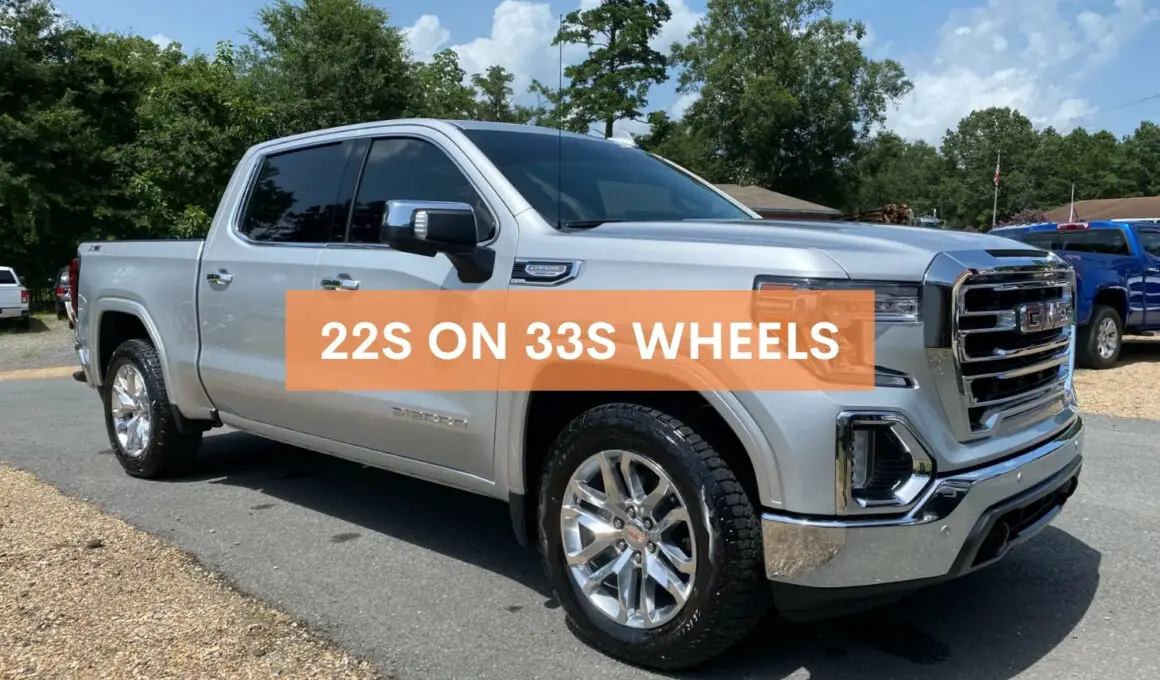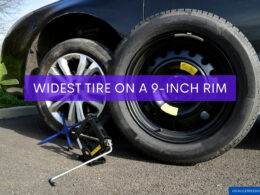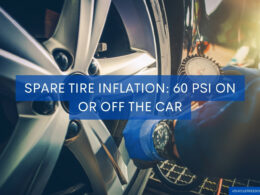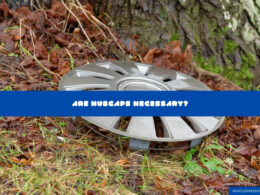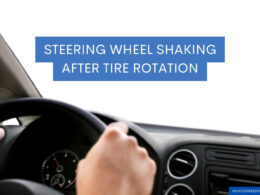In This Article Show
Having spent over 13 years in the world of car mechanics, I’ve seen trends come and go. Some fade away, while others establish a firm grip on the auto community. Among these, the “22s on 33s” trend has caught my eye and has piqued the interest of many, both seasoned gearheads and novices alike.
Now, you might wonder why someone who’s dabbled in car mechanics for more than a decade would spend time writing about this. Well, alongside my hands-on experience, I’ve also been documenting and sharing insights through blog posts like this one.
It’s a wonderful way to combine two of my passions and keep you all informed.
“22s on 33s” isn’t just a set of numbers; it’s about aesthetics, performance, and understanding the intricate dance between wheels and tires. Let’s get it.
Benefits of 22s on 33s
I’ve seen countless car modifications and trends, some purely aesthetic, and others functional. But few offer a blend of both like the “22s on 33s.”
Here’s what makes this trend tick:
1. Enhanced Aesthetic Appeal
- Bold Look: There’s no denying that bigger wheels create a standout look. A 22-inch wheel gives a vehicle a more aggressive and modern appearance.
- Showcasing Wheel Design: Larger wheels, especially 22s, allow for more intricate designs and finishes that can be visibly appreciated.
2. Improved Road Presence
- Elevated Stance: The combination of 22-inch wheels with 33-inch tires gives vehicles an elevated stance, making them more noticeable on the road.
- Greater Visual Impact: This setup often results in wider tire footprints, making your vehicle look more commanding and robust.
3. Potential Performance Benefits
- Enhanced Grip: The wider tires often associated with this setup can provide better road grip, especially beneficial for off-road adventures.
- Improved Handling: While it’s a bit counterintuitive, some users report better handling characteristics with bigger wheels, especially during cornering.
4. Versatility
- Adaptable to Different Terrains: With the right 33-inch tire type (all-terrain or mud-terrain, for instance), you can confidently traverse a variety of terrains, from highways to muddy trails.
5. Resale Value
- Increased Demand: As this trend grows, vehicles with “22s on 33s” might enjoy a higher demand in the second-hand market, potentially fetching a better resale price.
Note 👇
While I’ve witnessed these benefits firsthand over my years in the automotive industry, the impact of “22s on 33s” can vary depending on the vehicle type, usage, and specific wheel and tire brands. Always consider your personal needs and consult with professionals when making modifications.
Pro Tip 👋
Need to talk to a professional with a special discovery on your car issue? Use this link to talk to a professional. This is in partnership with JustAnswer, which has an on-call expert who can help you, especially during an emergency. Talk to a master mechanic now.
Drawbacks and Considerations for 22s on 33s
While the “22s on 33s” trend has its clear benefits, as with any modification, there are potential drawbacks and considerations to keep in mind:
1. Ride Comfort
- Stiffer Ride: Larger wheels can lead to a firmer ride, especially on bumpy roads or uneven terrains. This is due to the reduced sidewall height of the tires, which can absorb fewer road imperfections.
2. Increased Wear and Tear
- Brake Strain: Larger wheels can exert more strain on your braking system, leading to quicker wear of brake components.
- Suspension Stress: The additional weight and change in dynamics can place added stress on the vehicle’s suspension.
3. Cost Implications
- Higher Initial Investment: 22-inch wheels and 33-inch tires typically come with a higher price tag than standard setups.
- Maintenance Costs: Potential for more frequent replacements due to faster wear or any damages from off-road use.
4. Fuel Efficiency
- Potential Decrease: The increased weight and rolling resistance of larger tires can negatively impact fuel efficiency, leading to more frequent trips to the gas station.
5. Turn Radius
- Reduced Maneuverability: Larger wheels can sometimes increase the turning radius of your vehicle, making tight turns or parking in compact spaces a bit more challenging.
6. Potential Fit Issues
Clearance Concerns: Not all vehicles are designed to accommodate the “22s on 33s” setup without additional modifications. This could mean needing lifts or adjustments to avoid rubbing against wheel wells.
7. Weight
- Heavier Setup: Larger wheels and tires generally weigh more, which might affect acceleration and overall vehicle dynamics.
Being informed is key. Before diving into this trend, weigh the benefits against these drawbacks and considerations. Consult with professionals, and ensure the setup aligns with your vehicle usage and personal preferences.
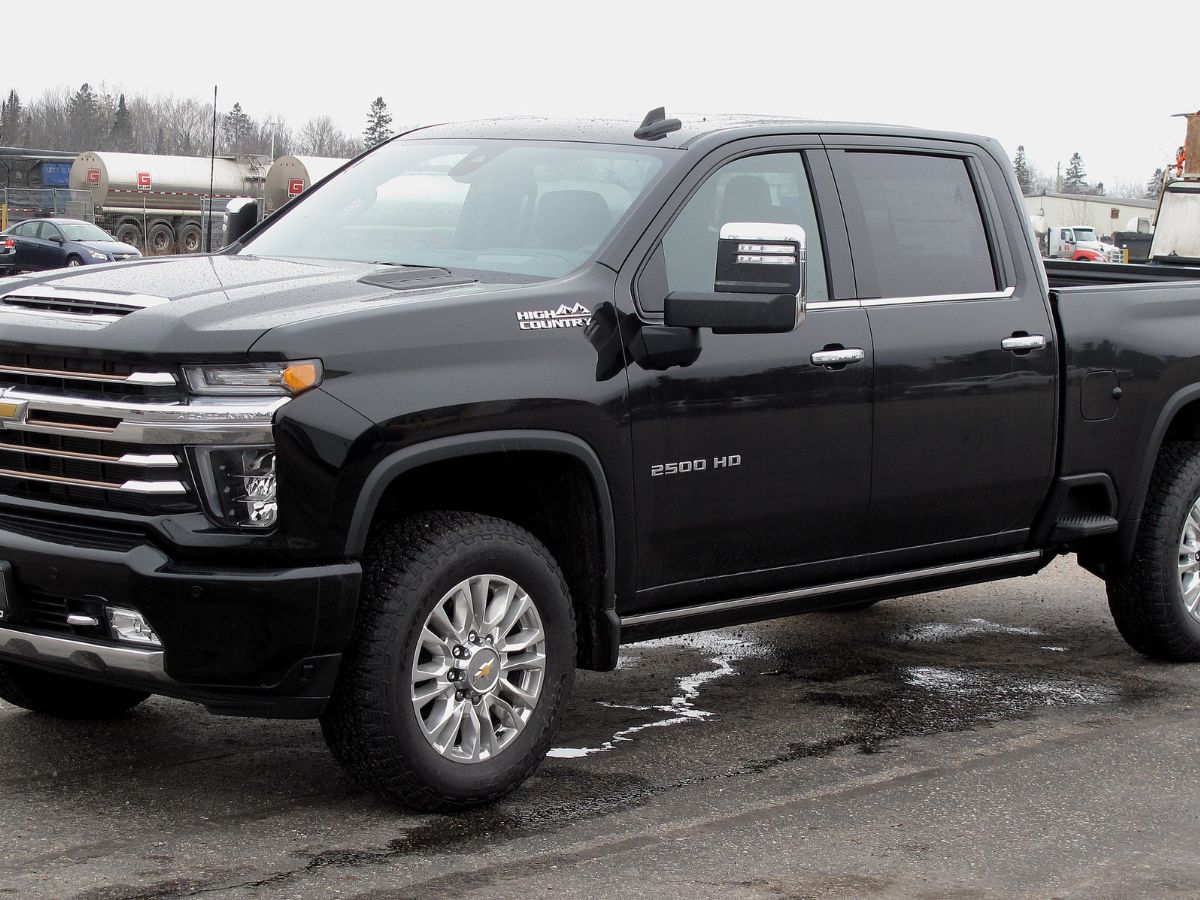
Choosing the Right 22-inch Wheels
Embarking on the journey of customizing your vehicle with “22s on 33s” means first and foremost, selecting the right 22-inch wheels. Your wheels aren’t just a visual statement; they’re central to your vehicle’s performance and safety.
Here’s a guide to ensure you make an informed decision:
1. Material Matters
Alloy vs. Steel
- Alloy Wheels: Typically lighter than steel, alloy wheels offer better agility and acceleration. They’re also known for their stylish finishes and can provide better brake cooling.
- Steel Wheels: These are more robust and durable, making them suitable for off-roading or heavy-duty use. However, they are heavier and might not offer the same aesthetic appeal as alloys.
2. Design and Aesthetics
- Spoke Patterns: Choose from a variety of patterns, from classic to intricate. The design can influence not only the look but also the weight and strength of the wheel.
- Finish Options: From polished chrome to matte black, brushed aluminum to custom paints, there’s a finish to match your aesthetic preference and vehicle’s color scheme.
3. Weight and Performance
- Wheel Weight: Lighter wheels can improve vehicle handling and fuel efficiency, but it’s essential to ensure they can withstand your typical driving conditions.
- Width and Offset: Consider the width and offset of the wheel. These factors can influence tire fitment, vehicle stance, and overall handling.
4. Branding and Reputation
- Top Brands: Brands like BBS, Enkei, and American Racing have built solid reputations over the years. Opting for established brands can ensure quality, performance, and after-sales support.
- Reviews and Feedback: Before purchasing, always check online reviews and feedback from other users. This can provide insights into durability, fitment issues, and overall satisfaction.
5. Budget and Value
- Price Range: Wheels can vary significantly in price. Determine a budget beforehand, but remember, sometimes it’s worth investing a bit more for quality and longevity.
- Warranty and Support: Consider brands or sellers that offer a warranty. This can be a sign of confidence in the product and provides you with peace of mind.
6. Safety and Compatibility
- Load Rating: Ensure the wheel’s load rating matches or exceeds your vehicle’s requirements, especially if you frequently carry heavy loads.
- Bolt Pattern and Center Bore: It’s vital to ensure the bolt pattern and center bore match your vehicle specifications for a proper and safe fit.
Summing it up
In the world of automotive customization, the wheels you choose can set the tone for your entire setup. By factoring in both performance and aesthetics, you can ensure your 22-inch wheel selection perfectly complements your vehicle and the 33-inch tires you pair them with.
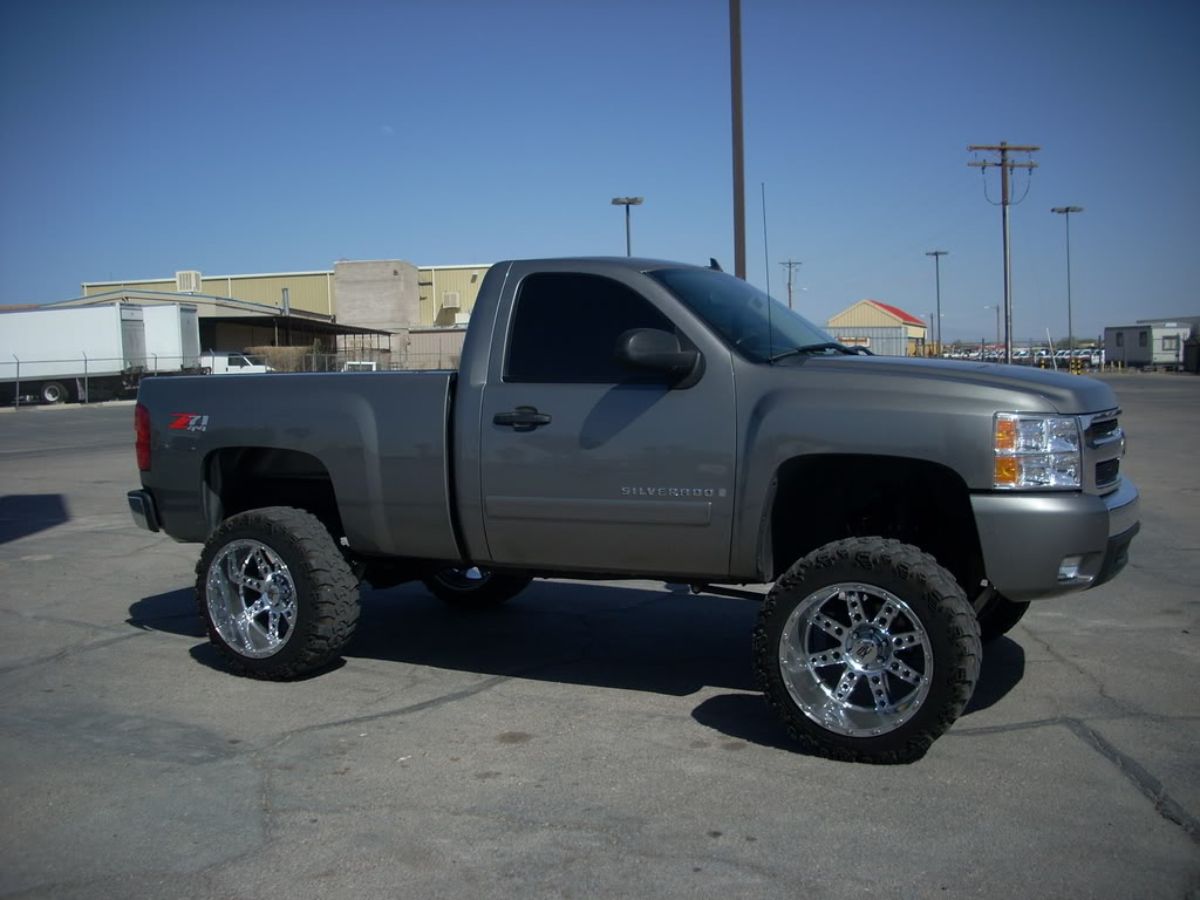
Selecting the Perfect 33-inch Tires
Once you’ve zeroed in on your ideal 22-inch wheels, the next pivotal choice is selecting the right 33-inch tires to accompany them. Tires play a monumental role in safety, performance, and ride comfort.
Here’s a detailed guide to help you make the best selection:
1. Purpose and Terrain
- All-Terrain: Ideal for those who transition between city streets and off-road trails. These tires offer a balanced performance with good tread life.
- Mud-Terrain: Best suited for off-roaders who tackle mud, rocks, and rough trails regularly. They offer excellent grip in challenging conditions but might be noisier on highways.
- Highway Tires: For those who primarily stick to paved roads and want a quiet, comfortable ride with long tread life.
2. Tread Patterns
- Aggressive vs. Mild: Aggressive treads offer better grip off-road but can be noisy and wear faster on highways. Mild treads are quieter and often last longer but might not offer the same off-road prowess.
- Siping: Small cuts in the tread can improve wet traction and reduce hydroplaning. Consider tires with siping if you frequent wet conditions.
3. Tire Construction
Radial vs. Bias Ply
- Radial Tires: More common and offer better road comfort and longer tread life.
- Bias Ply Tires: Tougher sidewalls make them durable for rugged terrains but might compromise on-road comfort.
4. Rubber Compound
Soft vs. Hard
Softer compounds grip better, especially in off-road situations, but tend to wear out faster. Harder compounds last longer but might sacrifice a bit on traction.
Load Capacity and Speed Ratings:
Ensure the tires can handle your vehicle’s weight, especially if you frequently carry heavy loads or tow. Additionally, consider the tire’s speed rating, ensuring it aligns with your driving habits.
5. Brands and Reputation
- Established Brands: Brands like Goodyear, Michelin, and BF Goodrich have garnered respect for their quality and performance. It’s often wise to opt for tried-and-true brands.
- User Reviews: Glean insights from fellow drivers. User reviews can offer real-world feedback on tire performance, durability, and overall satisfaction.
6. Budget and Lifespan
- Initial Cost vs. Longevity: While some tires might be cheaper upfront, their lifespan could be shorter. Evaluate the cost-per-mile to ensure you’re getting value for your money.
- Warranty: A good tire warranty can save you money in the long run. Look for brands offering generous tread life warranties or even road hazard coverage.
7. Climate and Season
All-Season vs. Seasonal Tires
While all-season tires offer year-round performance, dedicated summer or winter tires can provide optimized performance for specific conditions.
Selecting the perfect 33-inch tires is a blend of understanding your driving habits, prioritizing safety, and considering budget and aesthetics. With the right tires, you’ll not only elevate the look of your vehicle but also enhance its performance and safety on the road or trail.
Installation Tips and Tricks for 22s on 33s
Mounting 22-inch wheels and 33-inch tires onto your vehicle isn’t just about the right selection; it’s also about the proper installation. Properly installed wheels and tires ensure safety, optimal performance, and longevity.
Here are some handy tips and tricks to guide you through the installation process:
1. Preparation
- Clean the Hub Surface: Before mounting new wheels, make sure the vehicle’s hub surface is free from rust, dirt, or any other debris. A clean surface ensures a flush fit.
- Check All Components: Ensure that all wheel components, like the center caps, lug nuts, and hub rings (if applicable), are on hand before beginning.
2. Wheel & Tire Alignment
- Balance Your Tires: Always balance new tires before installation. Proper balance ensures smooth driving and reduces unnecessary wear.
- Check the Alignment: After installing new wheels and tires, get a professional wheel alignment. This helps in optimal tire wear and improves handling.
3. Lug Nut/Bolt Installation
- Hand-tighten First: Always start by hand-threading the lug nuts/bolts to prevent cross-threading.
- Use a Torque Wrench: When tightening lug nuts/bolts, use a torque wrench and follow the manufacturer’s recommended torque specifications. Over or under-tightening can lead to issues down the road.
4. Test Fit
- Spin & Check: Before lowering the vehicle, spin the wheel by hand to ensure there’s no interference with parts like the brake caliper.
- Full Turn: Once on the ground, turn the steering wheel fully left and right, ensuring there’s no tire rubbing against the vehicle’s fenders or inner parts.
5. Potential Modifications
- Consider a Lift or Level Kit: Depending on your vehicle and the specific 33-inch tire model, you might need a lift or level kit to prevent rubbing.
- Fender Modifications: In some cases, trimming or rolling the fenders may be necessary to ensure adequate clearance.
6. Post-Installation Check
- Drive & Re-check: After installation, go for a short drive. Listen for any unusual noises or vibrations. Then, re-check the torque on the lug nuts/bolts to ensure everything remains tight.
- Monitor Tire Pressure: Proper tire pressure is crucial for optimal performance, fuel efficiency, and tire longevity. Check the pressure regularly, especially after a new installation.
7. Maintenance
- Regular Rotation: To ensure even tire wear, regularly rotate your tires according to manufacturer recommendations.
- Consistent Inspection: Periodically inspect your wheels and tires for signs of damage, wear, or any issues that might arise due to the new setup.
Wrapping it up
While many enthusiasts opt for DIY installations, if you’re unsure about any step or feel out of depth, it’s always best to consult with a professional or have the installation done at a reputable auto shop.
Safety and precision are paramount when it comes to wheel and tire installations.
Pro Tip 👋
Need to talk to a professional with a special discovery on your car issue? Use this link to talk to a professional. This is in partnership with JustAnswer, which has an on-call expert who can help you, especially during an emergency. Talk to a master mechanic now.






